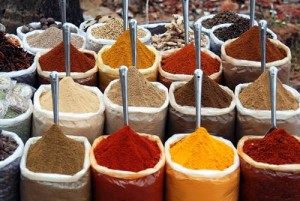FROM the glacial peaks of the Himalayas in the north to the tropical beaches of the Indian Ocean in the south, India is not only a physically vast and beautiful country, it is also home to one of the oldest cultures in the world.
While the Taj Mahal is the most instantly recognisable attraction in India, the country is home to a seemingly endless list of palaces, fortresses, bazaars and temples, each with its own story to share.
Of the 32 UNESCO World Heritage sites in India, 25 are cultural while the remaining seven are natural. Among them are the dazzling sandstone walls of Delhi’s Red Fort, built in 1638 to keep invaders at bay, and Humayun’s Tomb which dates back to 1570 and is considered the architectural inspiration for the Taj Mahal.
Travellers can also visit extraordinary places that have so far avoided UNESCO’s attention, including the Chand Baori which has been described as one of the most overlooked landmarks in India.
This spectacular stepwell was built over a thousand years ago in Rajasthan and is one of the deepest and largest wells of its kind in the world. With 3500 narrow steps descending 13 storeys deep, the double staircases create a geometric pattern that looks like a magical maze leading to a pool of water below.
As an increasing number of people find themselves drawn to India, the country now finds itself with one of the fastest growing tourism industries in the world.
Next year will mark the first time that luxury river cruise operator Uniworld graces India’s waterways with the launch of the all-suite Ganges Voyager II. The vessel will debut with the 12-night Golden Triangle & Sacred Ganges itinerary including seven nights in an onboard riverview suite and five nights in Oberoi Hotels & Resorts, allowing passengers to experience India’s colourful culture from the river and on land.
Uniworld general manager John Molinaro says the journey will showcase the region’s famous monuments such as the Taj Mahal, the palaces of Rajasthan’s Pink City of Jaipur, and Mother Teresa’s home, as well as sharing some hidden gems.
“A few must-dos include a visit to a local master craftsman’s home in Matiari, exploring the massive Hazarduari Palace and its thousand doors in Murshidabad, and the vivid light displays in Chandannagar that shine from every street. Guests will be amazed by the wonders of India both old and new,” Molinaro says.
With so much ground to cover and so many cultural gems to see, Cruiseco chief executive Steve Lloyd says intrepid travellers can explore India for months on end without running out of new highlights to discover.
When settling on what inclusions to feature in Cruiseco’s 27-night ‘Authentic Asia: India’ tour, Lloyd says much consideration was given to including iconic monuments, cities, and sites of religious significance that can be reached by river and road so that guests can experience the countryside rather than losing time in airports.
So which cultural gems made the list?
“All of Rajasthan for its mighty castles and palaces, particularly Jaipur, Jodhpur, Jaisalmer and, of course, Udaipur with the Lake Palace,” Lloyd explains. Varanasi, the holy city of the Ganges, also made the cut, along with Sarnath where Buddha preached his first sermon, and Fatehpur.
When asked about a cultural experience he’ll never forget, Lloyd casts his mind back.
“I think it would have to be my first visit to Varanasi 35 years ago and seeing the funeral pyres along the river bank. In Western culture, we treat death and funerals in such a clean and clinical way that the experience was confronting but no less dignified and important,” he reminisces.
As well as visiting important sites, travellers can experience India by joining in the celebrations at festivals and fairs scheduled throughout the year.
Diwali, the five-day festival which marks the start of the Hindu New Year is the biggest and brightest, and includes the Festival of Lights which signifies the victory of good over evil.
Jaipur also holds a competition for the most brilliantly lit market every year, helping to create a particularly beautiful celebration. Diwali timings change from year to year, and in 2016 it will be celebrated on 30 October.
What started as a business day for camel traders, the Pushkar Camel Fair is now a major tourist attraction as people gather to see more than 11,000 camels converge on a lakeside settlement in Rajasthan. Every November around the full moon, the camels are dressed up, compete in beauty pageants, race, and are traded as the sound of the silver bells and bangles around their hoofs jingle around the sand dunes.
With so many cultural events, gods and goddesses, seasonal festivities and historic moments to honour and remember, there is a festival to attend in India at almost any point of the year.
Thanks to the number of grand buildings that have already been either fully or partially converted into luxury hotels, visitors can also stay in historic castles and stately buildings; the perfect way to end a culture-packed day.



